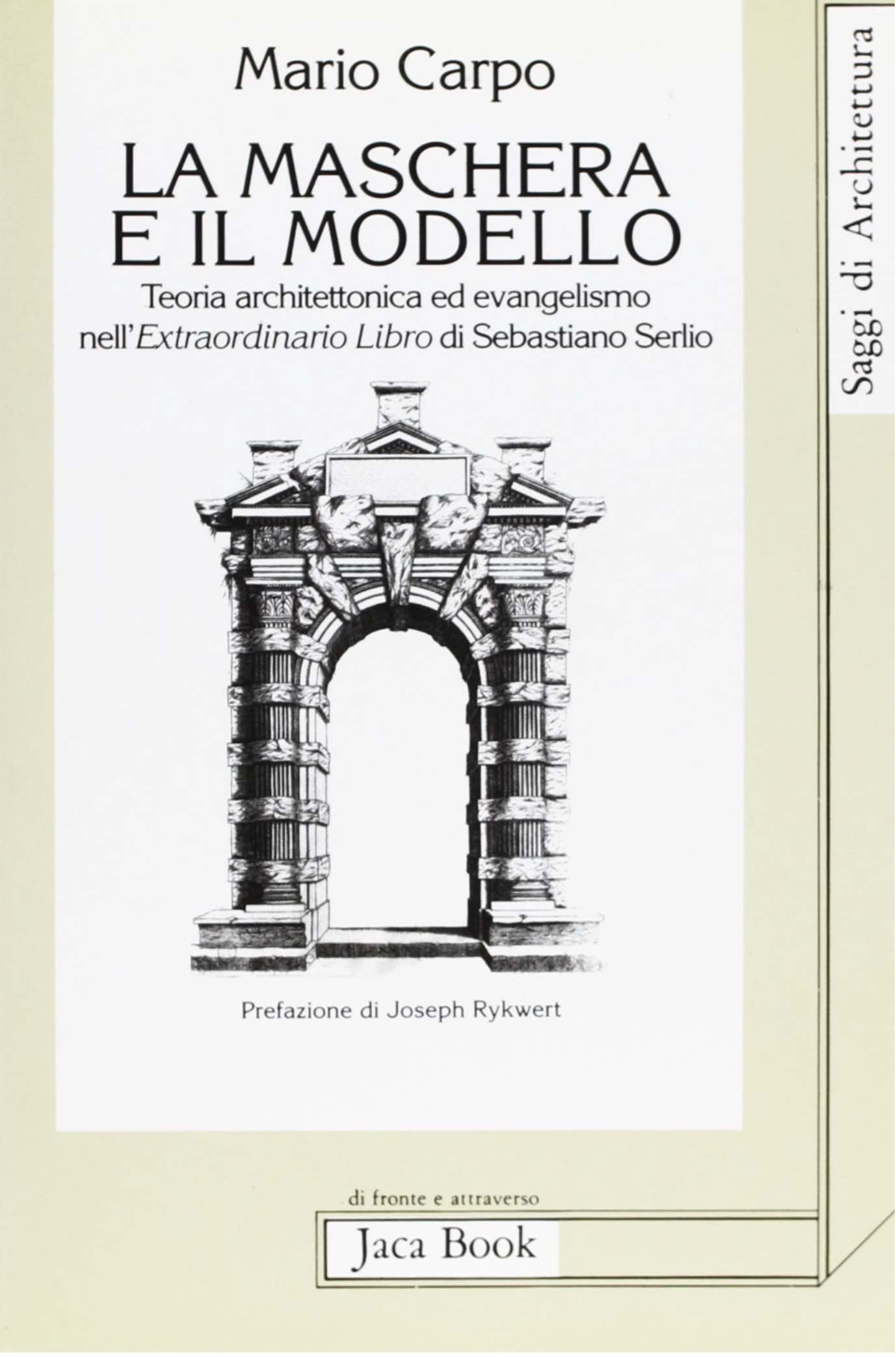La maschera e il modello: Teoria architettonica ed evangelismo nell’Extraordinario Libro di Sebastiano Serlio (1551)

139 pp.
6 x 9 in
Paperback
The Extraordinary Book (Libro Extraordinario, Lyons 1551) was the last of Serlio’s books to be published during Serlio’s lifetime. The book does not belong to the original plan of Serlio’s treatise, published in Venice in 1537—hence the title: the Extraordinary Book is an unforeseen, “extraordinary” appendix. It is also, in more than one way, remarkably alien to the spirit of Serlian architectural theory, which is known to us through the various parts of the treatise published in Venice, and eventually in France, between 1537 and 1551.
A comparison between Serlio’s Fourth Book, and his Third (1537, 1540 respectively) shows the making of Serlio’s Vitruvian creed. Serlio joins together Vitruvian dogmatism and the reprobation of any form of architectural “licence”. “Licence”, in the Serlian view, means: all architectural elements that fall beyond the scope of architectural mimesis—the Vitruvian principle of justification through Nature. But in Serlio’s theory this classical tenet gets mixed with unusual topics: new and modern connotations step in. The Serlian notion of “licentiousness” borders with “superfluity”—a category which is an unprecedented novelty in architectural thought. Serlio’s condemnation of “licence” is moral and economical, as well as technical and architectural. In Serlio’s treatise, architectural “licence” is often associated with a rather archetypal and embryonic idea of unproductive consumption; sometimes, more simply, with luxury. In the 1540s, this was not a neutral statement.
But then, in 1551, Serlio published his Extraordinary Book: a collection of 50 engravings representing patterns of monumental doors. Each picture is accompanied by a short caption; there is no other text except the opening dedication, and a preface. The 50 models are all, with some nuances, examples of unrestrained, capricious licentiousness. From the beginning, and up to contemporary historians and critics, this book was deemed a specimen of anti-classical decoration patterns. It was called “a Bible of European architectural Mannerism”. But why should Serlio—aged almost 80, ill and forlorn in his Lyons exile —contradict, if not recant, the core of the architectural doctrine to which he had devoted most of his earthly labours? A paradox which invites a sort of psychopathological explanation: in his old days, it has been suggested, Serlio might simply have gone mad.
But the Extraordinary Book was not born out of senile insanity. On the contrary, it belongs to a perfectly coherent pedagogical strategy. The Extraordinary Book is a tricky didactical tool. As an instrument for the transmission and the communication of (architectural) ideas, it is built according to rules and methods that may baffle modern readers, but that were common at the time of Serlio’s writing. The printer of the Extraordinary Book, Jean de Tournes, was an outstanding Protestant publisher. Protestant propaganda in Catholic countries had already developed several peculiar survival strategies. But, as it was shown by Carlo Ginzburg, Nicodemism was not just a matter of opportunistic dissimulation. It had deep theological and intellectual roots. There is no point in telling the truth to the reprobates—since, by definition, the reprobates could hardly understand it. The elect are a tiny minority—perhaps a persecuted minority— but this brand of sectarian pessimism was not originally related to persecutions, censorship, or the Inquisition. In Juan de Valdés, in Erasmus, it was a purely spiritual need. A need widely shared by the intellectual circles to whom Serlio himself belonged—witness a study of Serlio’s personal and professional ties. From beginning to end, Serlio’s career was directed, or at any rate marked, by “Spiritual”, or Evangelically biassed patrons. Some passages in Serlio’s treatise substantiate the author’s generally Evangelical belief, but also, in some cases, his adoption of some essential tenets of Protestant theology.
The classical topos of the Sileni was well known to Humanists. In the 1515 Froben edition of Erasmus’ Adagia it becomes the keystone of a long and famous digression. In all fields of spiritual and mundane lore, outward and visible signs are less important than inward and invisible meanings. In Erasmian terms, this becomes a universal attitude towards life and the world. Appearances are always misleading. Things are but the repository of a hidden truth. This applies to liturgy, to the faith, to people, to Saints, and to Christ himself— born in a hut, dead on the cross, he certainly did not seem the son of God. This applies to the Gospels: Christ chose to speak in parables to separate an obvious meaning from a secret one (Matthew, 13:13). To some extent, this may apply to every book.
Even to an architectural book. Serlio’s Extraordinary Book is a case of architectural dissimulation. The Extraordinary Book is two books in one. On the surface, it features a collection of 50 ‘Mannerist’ doors. Underneath, it conceals other, pure Vitruvian patterns. Invisible, and yet not unattainable. Truth is not made for all: as all humans, architects are either elect, or reprobated. But the same book may speak for all. Some are satisfied with the surface; others, albeit not many, will search for another, hidden and more profound truth. Greek artists, so the story goes, used to conceal their best sculptures within a protective case: a shell, a cocoon shaped as a bestial, grotesque Silenus. Divine beauty was sheltered within the monster: parcelled, wrapped, invisible. Break the Silenus, and you will see the God.
The Extraordinary Book is a collection of 50 architectural Sileni. Break the Silenus, and you will find Vitruvius. No peculiar initiation is required for a reader to find the right path. Instructions are there: they are clear. But not all eyes were made to see the truth…
Publisher
Citation
La maschera e il modello. Teoria architettonica ed evangelismo nell’Extraordinario Libro di Sebastiano Serlio (1551). Preface by Joseph Rykwert. Milan: Jaca Book, 1993.